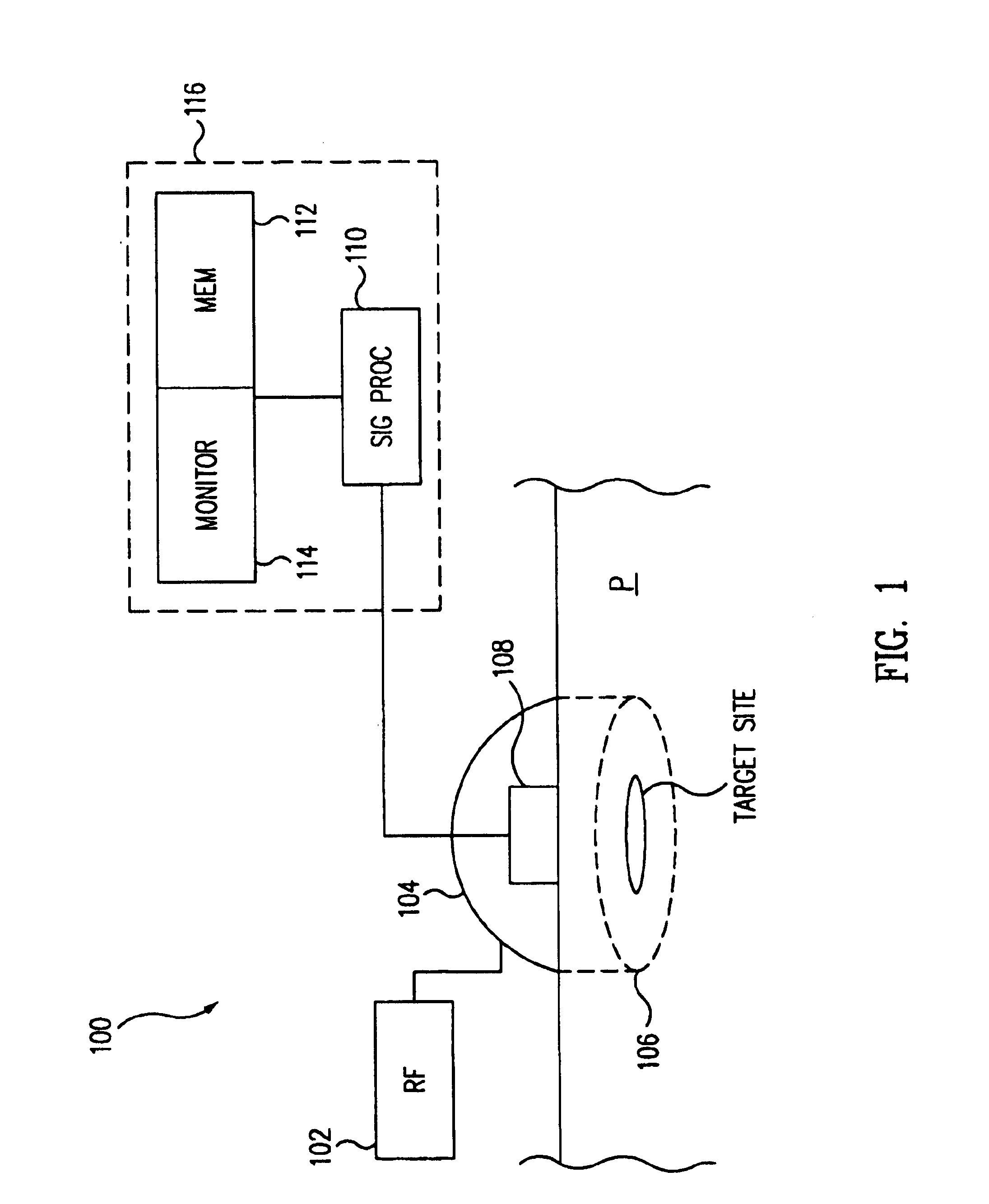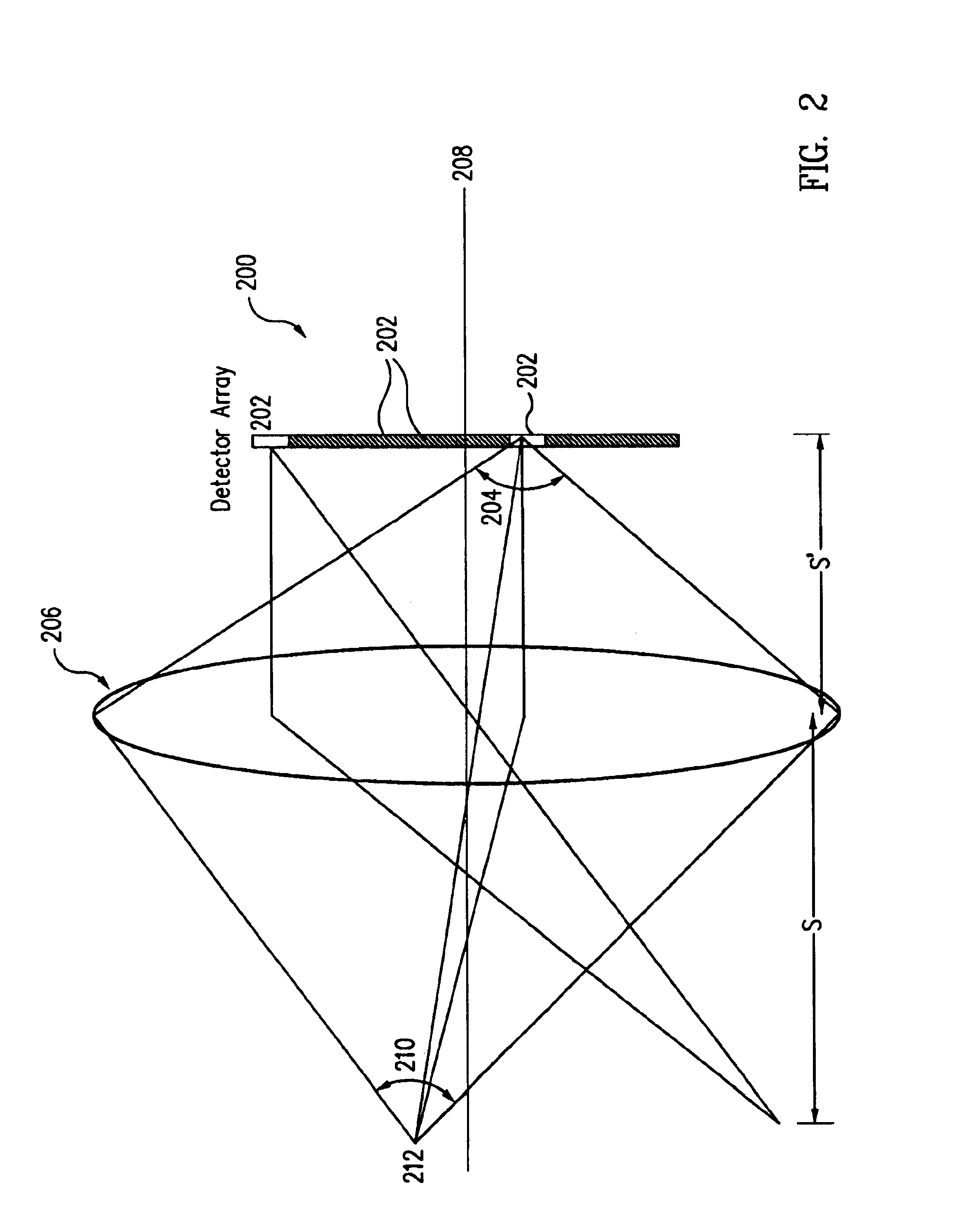Electromagnetic-acoustic imaging
a technology of electromagnetic and acoustic imaging and imaging apparatus, which is applied in the field of medical diagnostic equipment, can solve the problems of high facility cost, lack of portability, and high cost of imaging apparatus which relies on conventional mri, and achieves excellent contrast, large intrinsic contrast, and better resolution
- Summary
- Abstract
- Description
- Claims
- Application Information
AI Technical Summary
Benefits of technology
Problems solved by technology
Method used
Image
Examples
experiment 1
B1. Experiment 1
[0160]FIG. 4A is a schematic drawing of an experimental apparatus 400, used to demonstrate that ultrasound can be generated by surface charges at an interface between conducting and non-conducting media. FIG. 4A shows a vertical cylinder 401 holding a liquid 402, such as saltwater and a pair of horizontal solenoids 404 and 406 yoked together, providing a magnetic induction field in immersion volume 408. An RF power amplifier 410 feeds solenoids 404 and 406. A capacitor probe 412, which can be inserted in cylinder 401, includes two conducting plates separated by a thin gap. Two piezoelectric sensors 414 and 416 are located at the bottom of cylinder 401. A pulsed RF current source is used to excite the conducting plates of the capacitor probe 412 and / or solenoids 404 and 406.
[0161]In Experiment 1, the excitation frequency is 2.25 MHz, and the duration of the pulse is 10 microseconds. The resonant response of piezoelectric (PZT) sensors 414 and 416 is at 2.25 MHz, and 5...
experiment 2
B2. Experiment 2
[0165]In Experiment 1, ultrasound generation was demonstrated from surface charges induced on an interface between a conducting region and a non-conducting region. Experiment 2 demonstrates ultrasound generation at an interface between two regions of different conductivity. In Experiment 2, ultrasound generation is demonstrated from surface charges induced on an interface between two regions of different conductivity.
[0166]The apparatus 460 of Experiment 2 is shown in FIG. 4B, which includes two intersecting PVC ½ inch pipes, one horizontal 462 and the other vertical 464. A 5 MHz PZT detector 466 was placed at the bottom of vertical pipe 464, about 6 inches below horizontal pipe 462. Two electrodes 468 and 470 were placed in the horizontal pipe to provide horizontal current. A ring electrode 472 was placed in vertical pipe 464 as well, below the intersection with horizontal pipe 462. In Experiment 2, ring electrode 472 was disconnected when the pair of electrodes 468...
PUM
 Login to View More
Login to View More Abstract
Description
Claims
Application Information
 Login to View More
Login to View More - R&D
- Intellectual Property
- Life Sciences
- Materials
- Tech Scout
- Unparalleled Data Quality
- Higher Quality Content
- 60% Fewer Hallucinations
Browse by: Latest US Patents, China's latest patents, Technical Efficacy Thesaurus, Application Domain, Technology Topic, Popular Technical Reports.
© 2025 PatSnap. All rights reserved.Legal|Privacy policy|Modern Slavery Act Transparency Statement|Sitemap|About US| Contact US: help@patsnap.com



